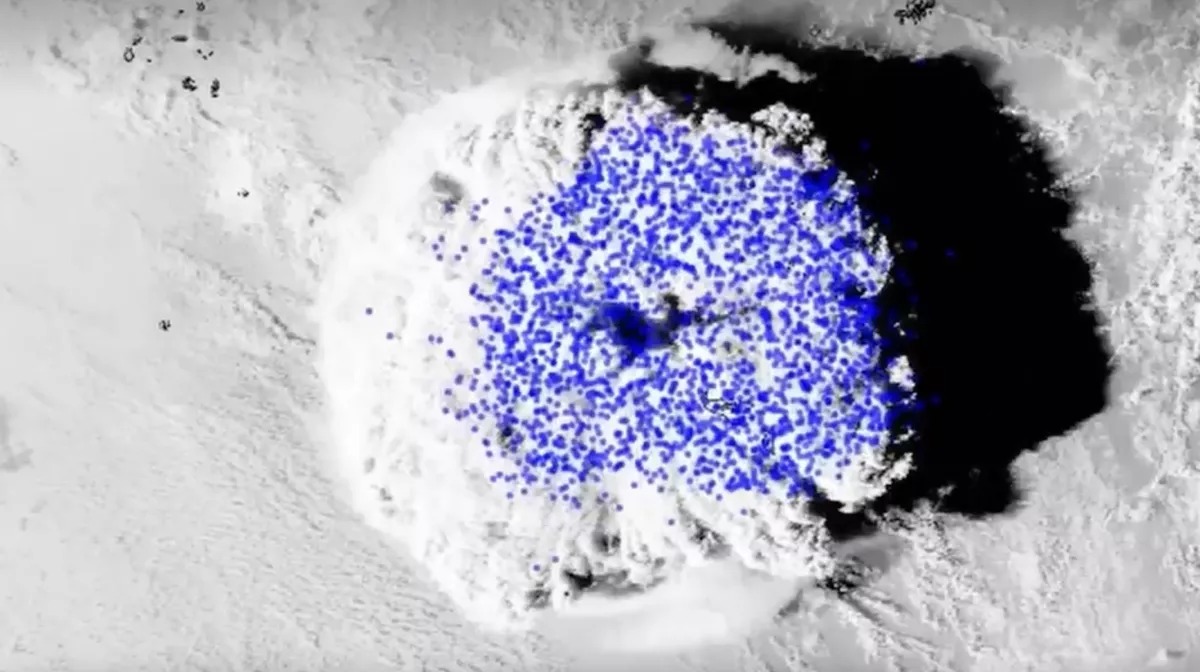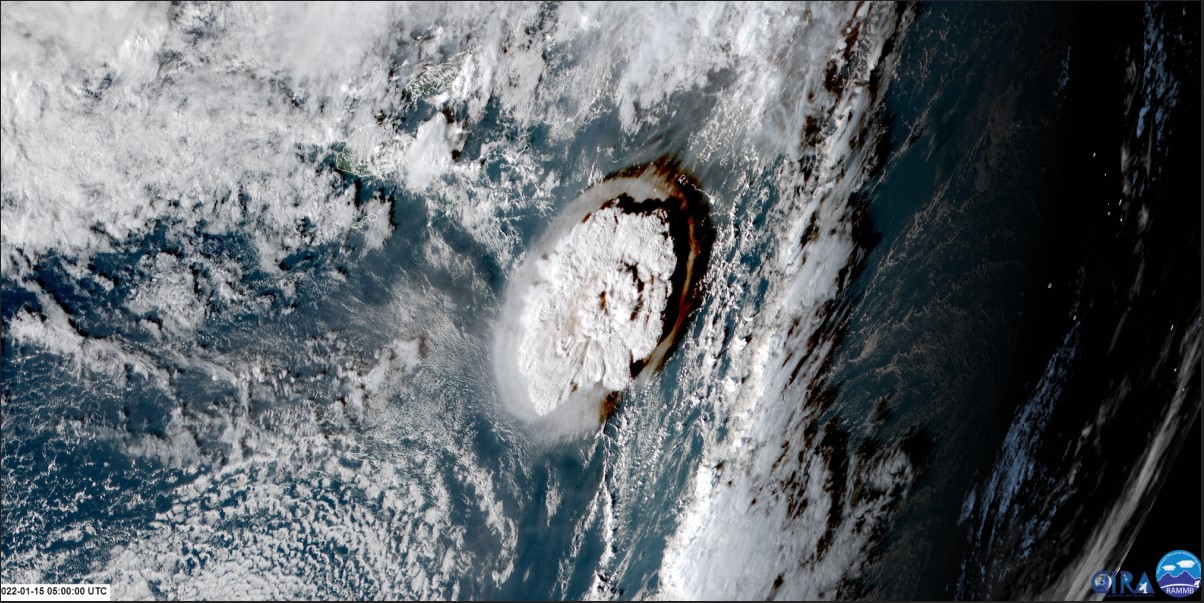The eruption of the Tonga volcano (full name Hunga Tonga-Hunga Ha’apai), which caused the most powerful atmospheric explosion ever recorded, also resulted in a record number of lightning strikes during an extremely powerful storm that lasted for 11 hours and spread over 240 km.

The volcano, located in the southern part of the Pacific Ocean, began erupting in December 2021. However, its most explosive event occurred on January 15, 2022. Despite the volcano’s caldera being located 150 meters below sea level, the eruption broke through the water and propelled a plume of ash to a height of 58 km at a eruption rate of 5 billion kilograms per second—more than the eruption of Mount St. Helens in May 1980.
Another record broken by the eruption was the number of lightning strikes. The plume generated the most intense lightning ever witnessed by humanity: 2,600 flashes per minute at its peak and a total of about 192,000 flashes over 11 hours. Moreover, this storm occurred at an unprecedented altitude of 20 to 30 km, higher than any previously recorded lightning activity. These powerful discharges were detected by a network of radio antennas designed to track storms as well as two near-Earth satellites: the GOES-17 satellite of the National Oceanic and Atmospheric Administration (NOAA) and the Himawari-8 satellite of the Japan Meteorological Agency.

Satellite imagery shows that the lightning strikes were not randomly distributed along the plume but rather occurred in several concentric rings, seemingly associated with each volcanic explosion. As the plume rose, it expanded, forming a “parasol cloud.”
How do storms form at such altitudes?
There are two ways lightning could have formed within this ring-like gravity wave. As the Tonga eruption occurred underwater, it ejected a significant amount of water into the Earth’s atmosphere, causing ice crystals to acquire positive and negative charges. Additionally, volcanic ash, formed from rock fragments and magma ejected into the air during the eruption, also became ionized, resulting in a greater number of regions with positive and negative charges. It is the electric charge gradient that triggers sudden lightning sparks.
While lightning rings have been observed in volcanic plumes before, the Tonga eruption was the first time multiple lightning rings were noticed—four, corresponding to the four phases of the volcano’s eruption. The lightning “rode” the pulsating rings like a surfer on ocean waves.
The Enigma Inside the Storm
Lightning rings are also known as “lightning rods” because there is typically no lightning inside the rings. However, the Tonga eruption differed from others as the openings began to fill with lightning just minutes after the gravity wave passed through them. The mechanism behind this filling remains unclear.
Nevertheless, the presence of lightning highlights how electrical flashes can be used for early warning of volcanic eruptions. Typically, volcanologists have to wait about 10 minutes for an orbital satellite to detect and photograph the volcanic plume before alerting emergency services. However, within this short time, tsunamis resulting from the eruption can inundate coastal regions, hurricane-force winds can level trees and buildings, pyroclastic flows can destroy square kilometers of land, and volcanic ash can damage jet engines. In contrast, lightning strikes are registered at the speed of light on radio frequencies.
Records of the Present Time
In addition to the fact that the eruption in Tonga is breaking records of the present time, this eruption belongs to the type of phreatoplinian volcanoes that occur when a massive amount of molten rock breaks through a thick layer of water. An explosive underwater volcano of this scale has previously been encountered only in geological records.
Furthermore, the eruption may provide clues about how such powerful lightning occurs on other planets such as Venus, Jupiter, or Saturn. Evidence of active volcanism on Venus was discovered earlier this year in archival data from NASA’s Magellan mission to the second planet from the Sun. However, volcanism is common on Jupiter’s moon Io, and forms of cryovolcanism are observed on Saturn’s moon Enceladus and possibly on Jupiter’s moon Europa as well.
Previously, we reported on how June broke the historical temperature record.
Source: Space

